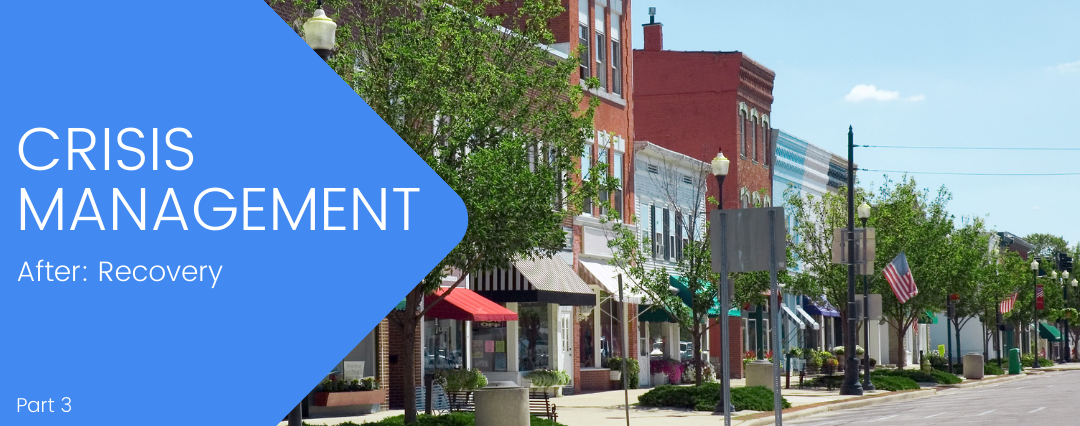Crisis management can seem like a daunting task, but the recovery stage is when you get to see the benefits of all your efforts. The aftermath of a crisis can truly test local leaders because recovery isn’t typically a quick process. Depending on the type of event a community or operation has experienced, recovery can take months or even sometimes years in the case of a serious natural disaster. In the final part of this series, we’re taking a closer look at the “after” stage of crisis management.
When does recovery begin?
As discussed previously, recovery should be a part of your pre-emergency plan from the start – on a long-term basis. And although it might be hard to imagine thinking about anything other than addressing the current crisis, recovery should really begin during the response phase. Whether you’re dealing with a natural disaster or a cybersecurity attack, the decisions made during this phase can affect your recovery efforts. While you’re responding to what’s currently happening to your community, you should be simultaneously gearing up for recovery.
What should a recovery strategy consider?
There are several different factors for local leaders to consider during recovery planning and execution, but here are a few:
- Scope of damage: If hit with a natural disaster, your community may have a lot of damage to repair and will need more work overall to recover. In cases like that, getting help from outside sources, such as FEMA and Red Cross, will be important. Leaders may also consider accepting volunteers to help with recovery efforts. The issue of debris removal should also be a concern, and coordinating how to handle it should also be included in your emergency management plan. The resulting damage will differ if dealing with a security emergency, such as a cyberattack that threatens your data and the integrity of your community’s personal information. We’ll get to the importance of data backup in relation to recovery later.
- Mitigation: In part 2 of this series, we explained how documenting your experiences during the event can help you evaluate your response. Doing so can help you thoroughly review your overall crisis management plan and alter it based on your identified strengths and weaknesses. A formal review can also help you prevent or minimize similar damage or shortcomings in the event of a future emergency.
- Finances: Track all of your expenses, such as money spent on services, supplies, and staff time. Having a solid idea of where your funds stand beforehand is important. Know what reimbursements you are eligible for and from who. Not every county or municipality has the same number of dedicated reserves to cover expenses before reimbursements are given, so this should be a significant consideration when creating your emergency plan and navigating recovery.
- Community resilience: Consider creating specific recovery goals. For example, if dealing with a natural disaster, such as a tornado that resulted in damage, your goals may include helping people get assistance, restoring infrastructure, facilitating business recovery, or gathering resources. Get your goals reviewed and approved by council and explain them to the public. Making your efforts known to your community can reinforce local leaders’ commitment to helping them rebuild while increasing resilience. Come back stronger and smarter together.
How important is data backup?
Data backup service should be a top priority for every local government and utility provider. Being the holder of confidential personal information, such as social security and credit card numbers, is a massive responsibility. Ensuring constituents that they can trust their data is protected is a must. No matter what kind of crisis you prepare for, having a cloud-based data backup and disaster recovery plan in place is essential.
Recovery efforts depend on the local government’s ability to protect and restore their own systems and access their data, which means recovery needs to happen quickly. With off-site backup into geographically separate data centers, information can be securely protected away from the disaster happening on-premise. It’s worth noting that local governments and service providers often operate on a tight budget, so finding a company that offers cost-effective recovery resources may also be a priority.
Crisis management is an ongoing process.
Each stage of crisis management – before, during, and after – works together to create a dependent, ongoing process. Your initial pre-emergency plan affects your response, which in turn affects recovery. It’s impossible to predict the unexpected but being proactive is the first step. Create a plan, and don’t forget that altering your plan when faced with new challenges is a must. Prepare, respond, recover, and mitigate for the future.





